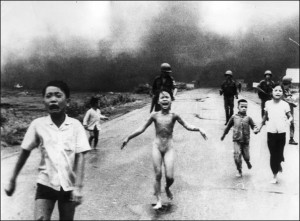As an EMT volunteer for Emergency Medical Services, I have learned much about preparation for catastrophes, what we call multiple casualty incidents (MCIs). Just the other day, we worked together with the the fire department, hazardous material unit, county ambulance services, and police for a MCI simulation where we more or less practiced working in an unexpected catastrophe, natural and manmade. These simulations are as real as they can be with “‘blood, guts, and galore”, screaming people, chaos and more. I have participated in a variety of simulations as a patient, medic, and observer. When we first come onto an incident, it is our job to save as many people as we can, but to not waste time with people who require more than the basic care. Triaging is classifying people as green, yellow, red, and black. As a medic, the hardest thing to deal with in these situations is triaging someone black because black means death or dying. In mass catastrophes, this could mean that someone is still alive, but won’t make it under the current situation. The person could be still screaming for help, but if their body is severed in half, we are to label a person black and move on to the next victim. This is traumatizing for all parties, both the medic and for the dying person.
I think this is just a small illustration of how mass catastrophes can drastically affect life. Just the seemingly endless amount of death and dying coupled with chaos and confusion changes the face of death. Maybe this is why our media is obsessed with apocalyptic, post-apocalyptic, and the “end of the world”. These themes have permeated everything from movies to music to books. Recently, the CDC published information on how to prepare for a zombie apocalypse. While funny and portrayed in a mildly joking manner, the point is to educate people on preparing for disasters including wars, terrorist attacks, tornadoes, hurricanes, earthquakes, etc. (11_225700_A_Zombie_Final). If you go through the comic, it is a little funny, but the simple idea of a MCI has taken off in a variety of ways that have people thinking about the changes needed to deal with so many bodies at once.
What do you think? How do you think our society understands MCIs? How do we deal with mass death on an emotional and physical level?





